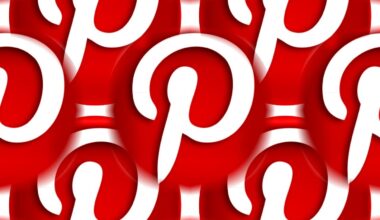Facebook Ads Budget Allocation: Paid Growth for Organic Followers
Investing in Facebook Ads has become essential for businesses aiming to expand their reach and engage with potential customers. By allocating budgets effectively to paid advertisements, companies can drive organic follower growth on their social media platforms. This strategic approach enhances brand visibility, thereby attracting more followers without needing constant advertisement spending. Additionally, understanding the nuances of Facebook’s advertising ecosystem is critical for optimizing the budget. Businesses can leverage various ad formats, targeting options, and analytics features to achieve specific goals, such as growing the follower base. Focusing on the right audience can lead to a higher return on investment, ultimately increasing organic interactions. Paid ads serve as a catalyst that can amplify content and direct traffic toward profiles, websites, and products. By experimenting with different campaigns, businesses can analyze data to determine what resonates best with audiences, which can be a powerful tool for future marketing efforts. In conclusion, a well-managed Facebook Ads budget not only fuels paid growth but can also promote organic follower acquisition significantly.
Effective Facebook Ads strategies require a thorough understanding of target demographics to ensure ads reach the right audiences. This involves analyzing user behavior and preferences to tailor messaging that resonates. By investing in the creation of engaging and valuable content, businesses can enhance their advertising effectiveness. A clear call to action within ads encourages engagement, driving potential followers to take desired actions – whether that’s liking a page, sharing content, or subscribing to updates. Furthermore, considerations about the timing of ad placements can greatly influence visibility, as posting during peak usage times often leads to improved performance. Companies should also explore varying content types, including images, videos, and carousel ads, as each type may appeal to different segments of their target audience. Creating a testing framework for ads can help identify which elements work best, allowing businesses to refine their approaches continually. Moreover, a balance between paid and organic strategies is vital; organic content complements ads by providing authentic engagement opportunities. In essence, a sophisticated approach to Facebook Ads can yield significant long-term benefits in both paid reach and organic growth.
The Importance of Balancing Paid and Organic Strategy
A successful Facebook Ads campaign is contingent on finding the right balance between paid and organic strategies. While paid ads can lead to rapid fluctuations in follower counts, organic growth is crucial for long-term sustainability. This organic engagement often translates to a more loyal audience. Thus, businesses focused solely on paid growth may find their follower base lacking in genuine engagement. Using Facebook’s algorithms to analyze audience reactions to both paid and organic content can offer deep insights into audience preferences and behaviors. These insights can shape future ad strategies, ensuring they are both relevant and engaging. Another vital component of this balance is the effective use of budget allocation. Businesses need to assess the return on investment for paid ads versus the organic initiatives they undertake, such as social media interactions and community outreach. Tracking metrics will identify what strategies are yielding results and what needs adjustment. Successfully adjusting the mix can lead to engaging content that fosters organic growth while also benefiting from the initial challenges of paid campaigns.
Facebook Ads also provide opportunities for lead generation, which fuels organic growth over time. Businesses can retrain followers through exclusive promotions and engaging content, encouraging them to share posts with peers. When leveraged effectively, ads can create a viral effect, wherein organic followers generate word-of-mouth enthusiasm around a brand. This leads to free advertising and fosters an authentic community keen to share and interact. Moreover, Facebook’s targeting features allow businesses to reach niche markets, ensuring that the ads resonate deeply with potential followers. Better-targeted ads often have higher engagement rates, leading to increased shares, comments, and likes. Results from these campaigns can provide analytics that inform strategy adjustments and optimize content for maximizing reach. Furthermore, measuring engagement levels helps businesses determine which types of content their audience prefers, allowing them to focus on producing similar pieces. Additionally, integrating realistic expectations and thorough understanding of the growth process can help businesses navigate the complexities of social media advertising effectively. Ultimately, investing in Facebook Ads can be a strategically beneficial decision, engaging audiences in authentic and valuable ways.
Using Analytics to Refine Strategy
Analytics play an integral role in the success of Facebook Ads campaigns, offering insights that can significantly refine advertising strategies. Tracking metrics such as click-through rates, conversion rates, and follower engagement allows businesses to gauge ad performance. Identifying which ads produce the most significant follower growth informs future campaigns and helps allocate budgets where they are most effective. Facebook’s built-in analytics tools provide businesses with valuable demographic insights about their audience, revealing important trends and preferences. This information helps tailor advertisements, ensuring that the message resonates with the target market. Furthermore, A/B testing different ad formats and creative can reveal which combinations yield the best results. By optimizing based on analytics, companies can develop campaigns that not only foster paid growth but also generate organic followers excited about engaging with their brand. Continuous refinement based on feedback leads to efficient use of the advertising budget, maximizing returns. In summary, data-driven decision-making enables businesses to navigate the landscape of social media growth effectively and capitalize on trends to enhance their outreach efforts.
Moreover, integrating feedback mechanisms into ads, such as surveys or engagement prompts, can provide valuable insights into audience perceptions. Understanding how advertisements are received can lead to greater empathy with potential followers. By actively soliciting feedback, businesses create an environment where their audience feels heard and appreciated, further encouraging organic engagement. This dialogue paves the way for enhancing brand loyalty, as followers who feel involved are more likely to continue supporting the brand. Additionally, incorporating storytelling elements into advertisements allows brands to connect emotionally with audiences, fostering deeper ties. A combination of strategic budget allocation and emotionally engaging content can increase the effectiveness of campaigns significantly. It’s essential for businesses to experiment with different advertising styles while remaining flexible and adaptable in response to data insights. Learning from past campaigns also empowers companies to make informed decisions in their advertising approach. Ultimately, the blend of paid growth using Facebook Ads and organic engagement strategies not only drives follower counts but also cultivates a thriving community around the brand.
The Future of Facebook Advertising
As social media evolves, so does the landscape of Facebook advertising. Businesses must stay alert to emerging trends and adapt their strategies accordingly. Innovations in ad technology can enhance targeting capabilities, enabling more personalized experiences for potential followers. Engaging in continuous examination of the effectiveness of different ad types can also improve outcomes in follower growth. Another growing trend is the use of video content in advertisements, which often yields higher engagement rates compared to static ads. By embracing new technologies and adapting to changing consumer behaviors, companies can ensure their Facebook ads remain relevant. Utilizing influencer collaborations may also provide opportunities for expanding brand reach organically, as followers from different demographics engage with the influencer’s audience, generating buzz around the brand. Additionally, embracing cross-platform strategies that include integrating Facebook ads with other social media platforms can lead to holistic growth. By synchronizing efforts across channels, brands can create a consistent voice and presence, forming stronger connections with followers. In conclusion, staying proactive, adaptable, and informed about these trends helps maximize the continued success of Facebook advertising.
Ultimately, businesses that successfully navigate the paid versus organic growth dynamic on Facebook will unlock a wealth of opportunities for follower engagement and brand loyalty. A strategic approach to budget allocation allows for initial paid growth while nurturing organic connections over time. Understanding audience preferences through analytics and feedback empowers companies to craft content that resonates deeply with followers. Integrating organic and paid initiatives fosters an enriching community experience, promoting collaboration and excitement around the brand. By actively engaging with their followers across multiple touchpoints, brands can stimulate conversations that lead to engagement and advocacy. This approach can transform passive followers into brand ambassadors. Furthermore, experimenting with various content types and ad formats enables companies to discover what drives the highest levels of engagement. The interplay of targeted advertising strategies focused on building authentic relationships, along with continuous refinement based on analytics, forms a powerful framework for achieving sustained growth. As engagement levels rise, positive feedback loops appear, benefiting both paid ad performance and organic follower development. Businesses must remain dedicated to striking the right balance between delivering valuable content, nurturing relationships, and leveraging targeted ads to grow their Facebook presence.


